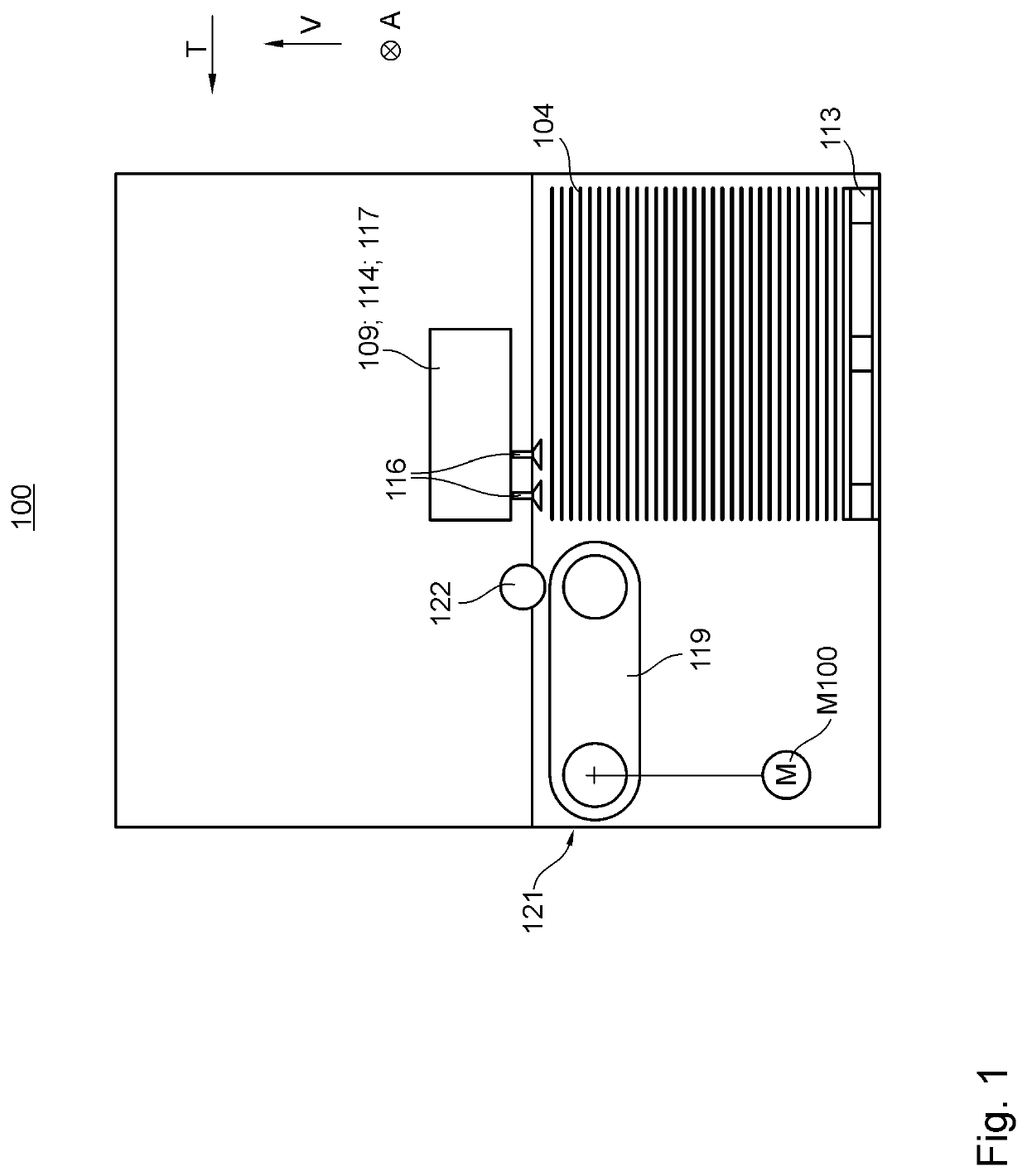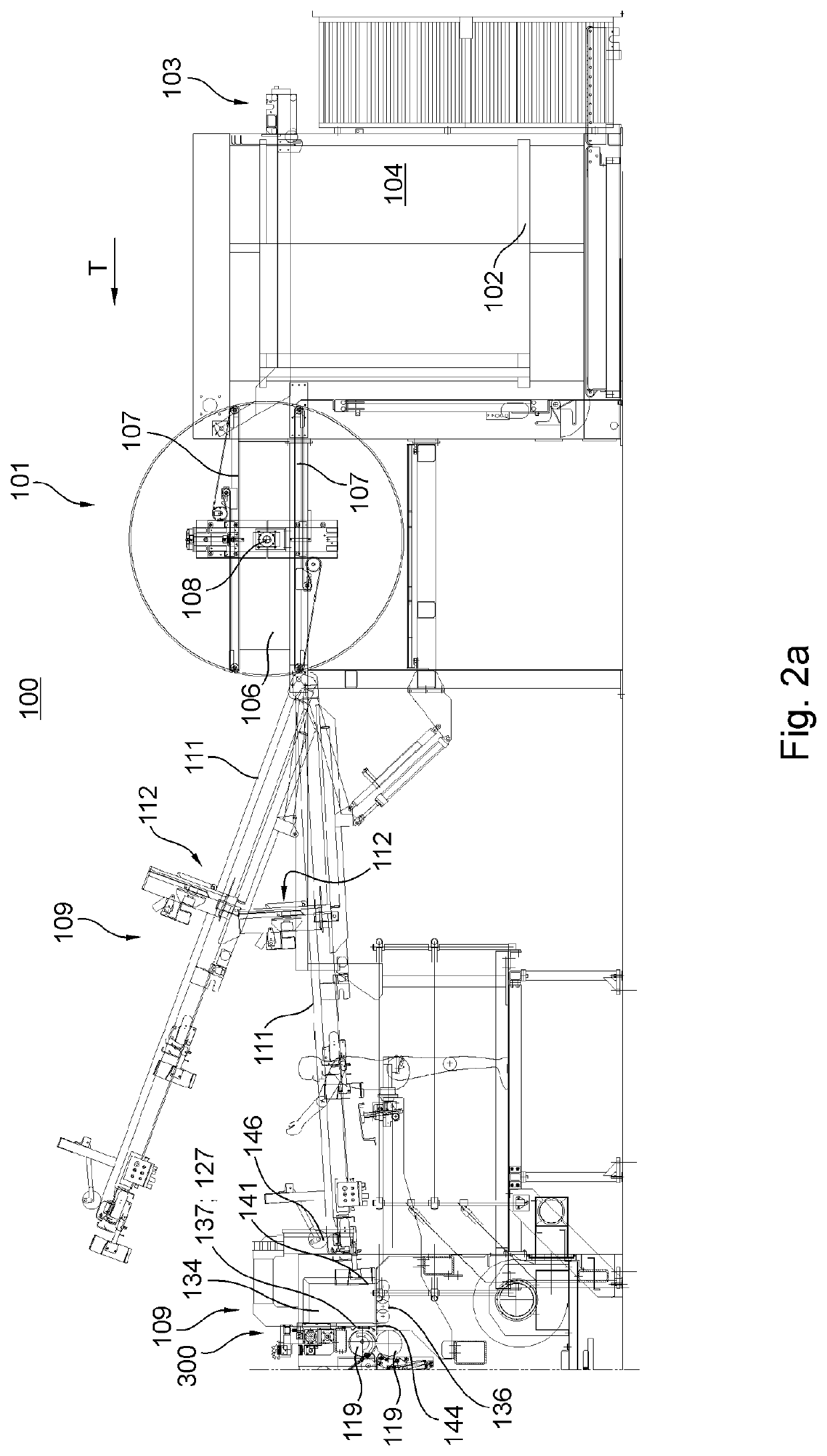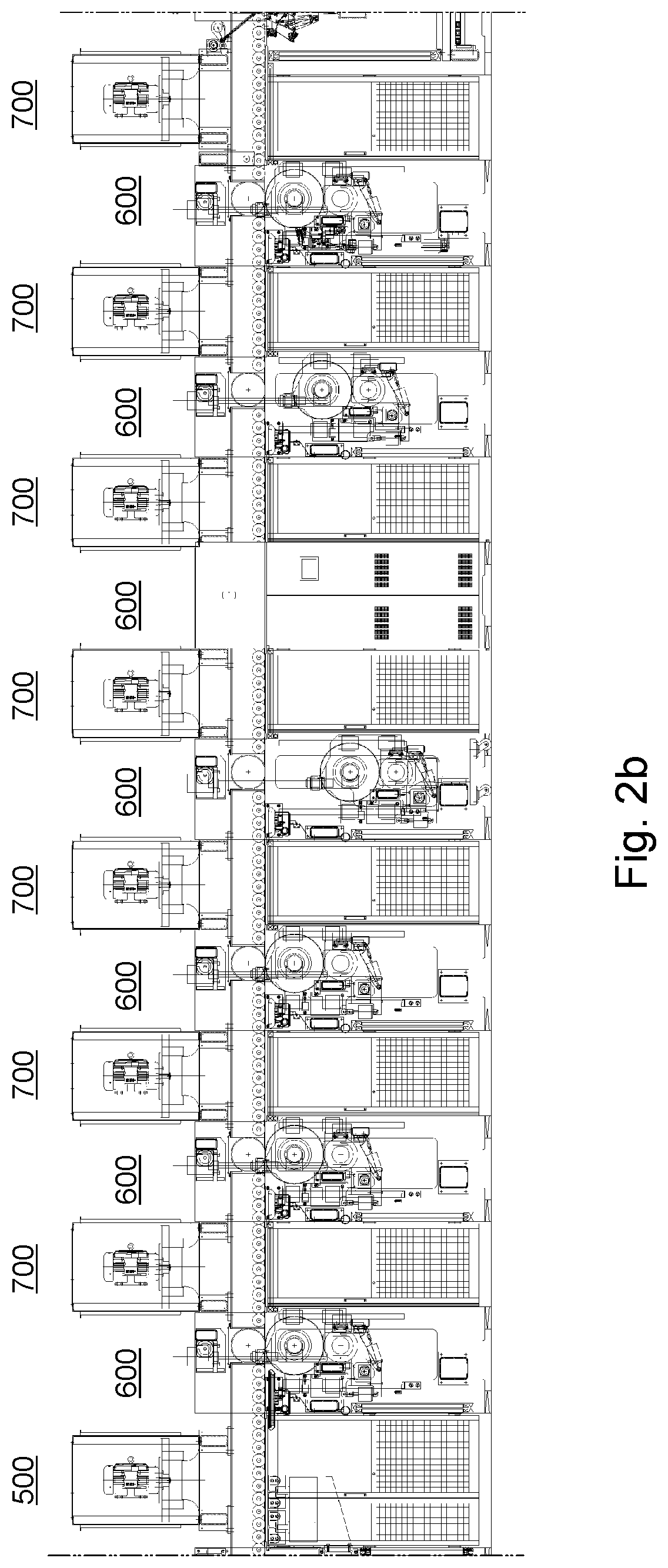Printing press
a printing press and press body technology, applied in printing, power drive mechanisms, other printing apparatuses, etc., can solve the problem that conventional transport systems cannot always be used with particularly thick sheets
- Summary
- Abstract
- Description
- Claims
- Application Information
AI Technical Summary
Benefits of technology
Problems solved by technology
Method used
Image
Examples
first embodiment
[0158]a suction transport means 111; 117; 119; 136; 211; 311; 411; 417; 511; 561; 611; 617; 711; 811; 817; 911; 1011 is a suction belt 111; 117; 119; 136; 211; 311; 411; 417; 511; 561; 611; 617; 711; 811; 817; 911; 1011. In this context, a suction belt 111; 117; 119; 136; 211; 311; 411; 417; 511; 561; 611; 617; 711; 811; 817; 911; 1011 is understood as a system having at least one flexible conveyor belt 718; 726, which serves as a transport surface 718. The at least one conveyor belt 718; 726 is preferably deflected by deflection means 724 configured as deflection rollers 724 and / or deflection cylinders 724 and / or is preferably closed, so that continuous circulation is possible. The at least one conveyor belt 718; 726 preferably has a multiplicity of suctioning openings 723. Over at least a portion of its circulation path, the at least one conveyor belt 718; 726 preferably covers the at least one suction opening 722 of the at least one vacuum chamber 719. In that case, vacuum chambe...
second embodiment
[0159]a suction transport means 111; 117; 119; 136; 211; 311; 411; 417; 511; 561; 611; 617; 711; 811; 817; 911; 1011 is a suction box belt 111; 117; 119; 136; 211; 311; 411; 417; 511; 561; 611; 617; 711; 811; 817; 911; 1011. A suction box belt 111; 117; 119; 136; 211; 311; 411; 417; 511; 561; 611; 617; 711; 811; 817; 911; 1011 is understood as a system that comprises a plurality of suction boxes 718; 727, each having an outer surface 718 that serves as a transport surface 718. Each of the suction boxes 718; 727 preferably has at least one suction chamber 728. The respective suction chamber 728 is preferably open outward in one direction through at least one flow opening 729. This at least one flow opening 729 preferably serves to conduct a negative pressure from the vacuum chamber 719 into the respective suction chamber 728. The at least one flow opening 729 is positioned laterally, for example, or is positioned such that it faces at least intermittently in or opposite a vertical di...
third embodiment
[0161]a suction transport means 111; 117; 119; 136; 211; 311; 411; 417; 511; 561; 611; 617; 711; 811; 817; 911; 1011 is a roller suction system 111; 117; 119; 136; 211; 311; 411; 417; 511; 561; 611; 617; 711; 811; 817; 911; 1011. A roller suction system 111; 117; 119; 136; 211; 311; 411; 417; 511; 561; 611; 617; 711; 811; 817; 911; 1011 is understood as a system in which the at least one transport surface 718 is composed of at least parts of lateral surfaces 718 of a multiplicity of transport rollers 724 and / or transport cylinders 724. The transport rollers 724 and / or transport cylinders 724 each form closed parts of the transport surface 718 that circulate by rotation. The roller suction system 111; 117; 119; 136; 211; 311; 411; 417; 511; 561; 611; 617; 711; 811; 817; 911; 1011 preferably has a multiplicity of suction openings 722. These suction openings 722 are preferably arranged at least between adjacent transport rollers 724 and / or transport cylinders 724.
[0162]At least one cov...
PUM
 Login to View More
Login to View More Abstract
Description
Claims
Application Information
 Login to View More
Login to View More - R&D
- Intellectual Property
- Life Sciences
- Materials
- Tech Scout
- Unparalleled Data Quality
- Higher Quality Content
- 60% Fewer Hallucinations
Browse by: Latest US Patents, China's latest patents, Technical Efficacy Thesaurus, Application Domain, Technology Topic, Popular Technical Reports.
© 2025 PatSnap. All rights reserved.Legal|Privacy policy|Modern Slavery Act Transparency Statement|Sitemap|About US| Contact US: help@patsnap.com



